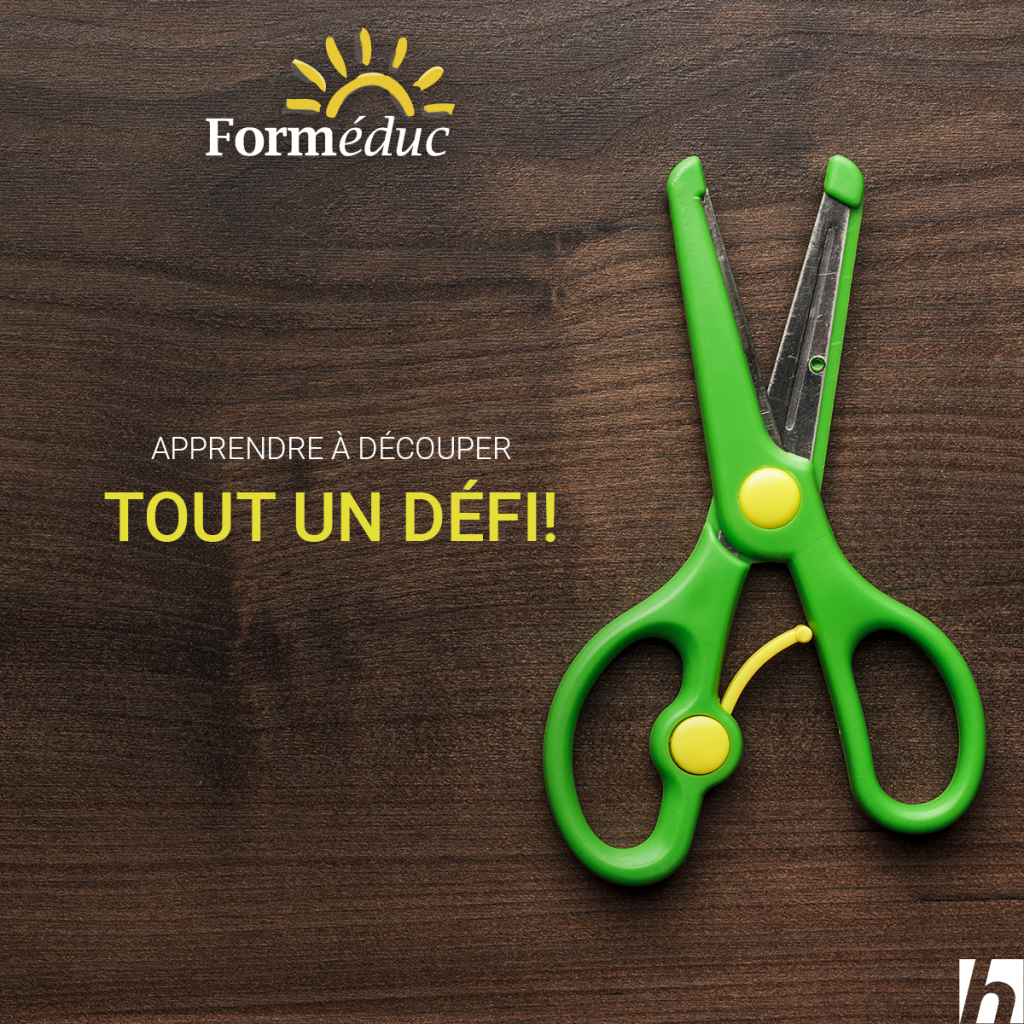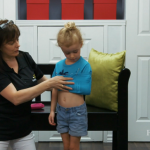

- 1 March 2020
- |
- Andrée Bouchard
Learning to cut is an important stage in the development of a child’s fine motor skills. It’s an exercise that requires good hand-eye coordination and practice to master this unique tool: scissors!
Using scissors requires precision, because to cut, the child must make a sequence of precise gestures: open the scissors, place them perpendicular to the paper and close them, then open them again, advance on the paper in continuity with the line already cut… and start again.
You’ll find cutting patterns and other tips to help children practice their handwriting skills in our “Preparing children for kindergarten” course.
At first, children become familiar with scissors. He holds them in both hands and plays with opening and closing them. If a sheet of paper is held for him, he can make a cut.
Later, the child learns to hold the scissors with one hand and manipulate the paper or other material with the other. Around the age of 3-4, the child becomes able to perform the complete cutting gestures (opening the scissors, moving forward on the paper and closing the scissors).
Once comfortable with the cutting gesture, children refine their skills by cutting according to certain criteria, the difficulty of which will increase. The lines to be cut will progress from straight lines to dotted lines, followed by rounded shapes and then shapes with angles.
Tips to make learning to cut easier
- Teach your child to hold the scissors properly. This is the basis! The thumb should be pointing upwards. If possible, choose scissors with two circles of different sizes for the fingers (the smaller for the thumb, the larger for the index and middle fingers).
- If your child is left-handed, get him left-handed scissors. They’ll be easier to use.
- Vary textures. Children will discover that thin cardboard is easier to cut than tissue paper. You can even let them cut out bits of modeling clay!
- Let the child have access to the scissors. The child who is clumsy with scissors may simply not have many opportunities to practice using them. Make cutting materials available. Prepare a box with cardboard scraps, patterned paper, paper or cardboard of different thicknesses… and scissors. Children can experiment with cutting to their heart’s content.
- Start by cutting out simple lines. Projects that are too complicated may discourage the child. Increase the level of difficulty as your child becomes more comfortable with scissors;
- Offer solid, colorful shapes to cut out. The child will find it easier to follow the outline of the shape than if it’s just a line. What’s more, if the outline of the shape to be cut out is made of a line, make sure it’s thick, so that the child doesn’t lose sight of it when the scissor blade passes over it.
- When the child needs to cut out a more complicated shape, show him how to turn the sheet instead of reorienting the scissors.
- Integrate the cutting activity into a project. Children are more likely to get involved if what they cut out is then used to make a craft.
And above all… let your child experiment for himself. Eventually, they’ll integrate the gestures involved in cutting, and with practice, they’ll become increasingly dexterous!




